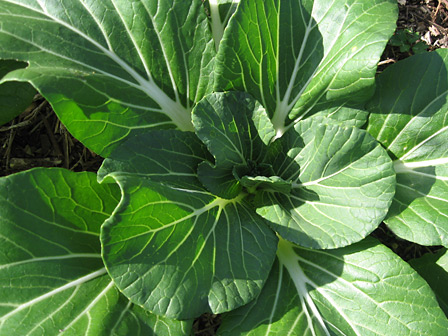There is a lot to do in the garden at the moment: more seeds to start, seedlings to transplant, new garden beds to be dug, and trellises and other supports to put together. I’ve just finished digging a new bed for some globe artichoke seedlings. Today we also planted the first curcurbits of the season — an heirloom zucchini called “black beauty.” I hope we are not planting them out too early. To judge by how warm the soil feels on my fingers, they should do just fine.
When we look around us now, the whole world is covered in the bright green of spring. Our pasture seems to be growing faster than the cows can eat it. The grape vines are covered in leaves, and bumble bees are visiting the flowering fava (broad) beans. Readers of Cryptogon might remember the garlic that we planted back at mid-winter on top of a big batch of fish carcasses. The garlic seems to like its diet of fish, and has really taken off now that the weather has warmed up.

Broad beans

Garlic
As well as being busy in the garden, I’ve been working on a drawing, which is to be a thank you gift for some people who have been extremely kind and generous to Kevin and me. It’s been a long time since I did any drawing! It feels good to have pencils and crayons in my hands again after so long, and it’s nice to be able to give a gift that we’ve made ourselves.
I guess it’s time for an update on the batch of bok choi kimchi that I wrote about a while back. I’m afraid the news is not good. That batch of kimchi looks fine, and it fermented well, but (alas!) it tastes disgustingly salty. I must have become muddled and added the salt twice or something. Yuck. The cows have eaten some of it. Kevin put it out with their salt and kelp rations. (Kikuyu grass, which makes up the bulk of our pasture, doesn’t do a very good job of pulling sodium out of the soil. Animals on a kikuyu-based diet need plenty of supplemental salt rations.) That kimchi tasted like one big monster salt ration to me, so I hope it does our animals some good. The other batches of kimchi that I’ve made recently have turned out fine, including one that contains more of the bok choi from the garden. So, despite one failure, we still have plenty of kimchi to eat.



